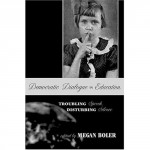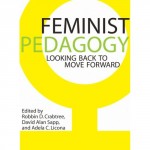Note: Today I am giving a talk/workshop on blogging for feminist teaching and research. I have decided to post it as a series of entries on this blog so that it can serve as a virtual handout for those attending the workshop and as a resource for those who couldn’t make it. Another reason I am posting this talk here is that I am experimenting with using the blog, instead of powerpoint, as the format for my lectures and talks. Some of the material in these posts has been posted on other entries on this blog. This is part 1.
Have you ever wanted to use blogs but felt overwhelmed by learning new technologies and techniques? Have you tried using blogs in your classes but found that the students didn’t really engage with the blog or each other? Are you looking for new strategies for implementing feminist pedagogy?
These are just some of the questions that I will be addressing in my talk/workshop on blogs. In addition to discussing why blogs are valuable for both teaching and research, I will provide some strategies for using blogs in the classroom and offer a brief, hands-on tutorial on some blog basics. So, whether you are already using blogs in your classes or you aren’t even sure what a blog is, this workshop is for you!
My Background
I have used blogs in my Gender, Women and Sexuality Studies classes for three years now. Although many of these blogs were not that successful (a few, especially this and this, were great), they have helped me to learn a lot along the way. Don’t get me wrong, I am definitely not an expert (or even close). But, I do feel that I have picked up a thing or two about how and, more importantly why, blogs are helpful in classrooms–especially queer and feminist ones. The goal of this workshop/talk is to share some of my experiences using blogs. I am not interested in telling you, “this is how you should blog,” but in sharing my own experiences with blogs and facilitating a reflection (offline and online) on the benefits and drawbacks of blogging in the feminist classroom.
Note, 2019: Several years ago, the University of Minnesota migrated to another platform. My blogs became no longer available. I was able to find some of them on wayback: Course Blogs
Here is a link list of the blogs that I have created/managed at the University of Minnesota through UThink:
2007
Pop Culture Women
International Feminist Theory
2008
Queering Theory
Rebels, Radicals, Revolutionaries
Introduction to GLBT Studies
Feminist Pedagogies
2009
Contemporary Feminist Debates
Feminist and Queer Explorations in Troublemaking
Feminist Pedagogies
Queering Theory
2010
Feminist Debates
Feminist/Queer/Troublemaking
Queering Desire
Feminist Pedagogies
2011:
Feminist Debates
Politics of Sex
Queer/ing Ethics
In addition to using blogs in my classes, I started writing in my own blog in the summer of 2009. I envisioned it as a tool for writing and teaching, a way to demonstrate and explore connections between my academic training and the “rest of my life,” a way to promote critical thinking and to persistently and passionately argue that it exists everywhere and should be practiced all of the time, and an archive and resource for my own research on troublemaking. For a full explanation, see my “about this site” page. In the summer of 2010, I added two more blogs: It’s Diablogical! A Collaborative Project in Feminist Pedagogy and Unchained.
Why Blog?
Having used blogs in my courses for over three years now, I see how valuable they can be for:
- Developing connections between class members
- Enabling students to engage with the material and each other in different ways
- Encouraging students to really think about and process the readings/course topics
- Helping all of us to organize our thoughts and ideas
- Establishing a central location for posting information and handouts
- Extending the space of engagement and learning beyond the physical classroom
- Getting the students excited about the class
- Providing a space for students to track their own ideas and engage in critical thinking, learning, community building and knowledge production
I have found blogs to be particularly helpful in my own development and implementation of feminist pedagogical practices, like:
- Shifting/reworking who counts as an authority or who can produce/share knowledge
- Providing students with more ways to engage and express that engagement
- Enabling students to learn from each other, enabling instructor to learn from students
- Requiring students to claim more responsibility for the class and how it works/doesn’t work
- Training students in an important form of technology (access)
- Giving the instructor more opportunities to engage with students/material and to share their own research/knowledge in creative ways
- Disrupting the rigid boundaries of the classroom in space and time
- Encouraging the instructor to experiment with new techniques and strategies
- Cultivating a space for public scholarship and for connecting with a wide range of people/communities inside and outside of the class and the university
And writing and managing my own blog while teaching has been very valuable for my own scholarship. Writing in this trouble blog has enabled me to:
- Continue writing and researching while teaching 2 courses per semester
- Find unexpected connections and develop new directions for research as I critically engage with course materials on my blog
- Maintain my writing/researching skills as I regularly practice them on my own blog and the blogs for my courses
- Share my work in progress with other scholars, students, folks outside of the university
- Archive my findings in a way that is accessible for future work
- Document my writing/researching/thinking process


